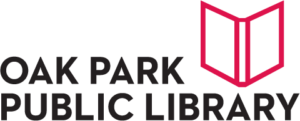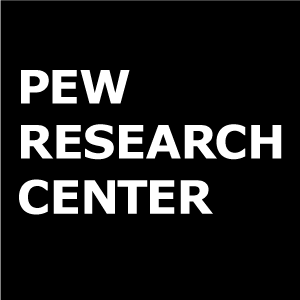I was recently contacted by Tatiana Weinstein, Assistant Director/Director of Adult Services in the Lisle, IL Library District, about an August feature article she published in the national magazine, Public Libraries Online. She speaks to her colleagues on an excellent topic: the need to widen libraries’ marketing reach to adults without children. With her permission, I have cross posted it here:
The Child-Free Factor and Other Fringe Benefits: Moving Beyond Natural Targets
It would be shocking to propose removing a significant percentage of the expected entries from the library newsletter and decisively replacing that content with news and resources targeted at single adults. When is the last time you visited a public library’s website or social media page where most of the photo stream simply featured thirty-somethings? Fifty-somethings?
The public library should be a place of learning, exploration, and enjoyment for children. The library should also offer parents essential resources and tools to successfully raise children. We do provide these services, and we do it very well—and absolutely should continue to do so. But we too often exclusively brand ourselves as a resource for families. In addition to visual promotions, much of our narrative is focused on families with children, from newsletter articles to local paper write-ups to board meeting talking points. Who could blame us? Those images tug at the heartstrings, and stories of kids creating a craft at a program will appeal to any mom or dad. But, in promoting this impression more than others, public libraries are, to our detriment, alienating a rising population of potential users. It’s time to modify our marketing perspectives.
Marketing Outside the Orthodox Box
When we advertise ourselves chiefly as a place for families with children, we inadvertently set up a model where the library not only is less appealing to child-free people, but doesn’t even register as a destination space for them. Why would one decide to venture to a place where they haven’t been invited?
 In other words, we are routinely preaching to the choir and we need to do a little more marketing outside the orthodox box. The American Library Association states in one of its “Core Values of Librarianship” that “[t]he publicly supported library provides free and equal access to information for all people of the community the library serves.”[1] This basic principle of providing for all inherently includes advocacy of library services to the public. We have the democratic responsibility to spread our message to all. This includes nontraditional users.
In other words, we are routinely preaching to the choir and we need to do a little more marketing outside the orthodox box. The American Library Association states in one of its “Core Values of Librarianship” that “[t]he publicly supported library provides free and equal access to information for all people of the community the library serves.”[1] This basic principle of providing for all inherently includes advocacy of library services to the public. We have the democratic responsibility to spread our message to all. This includes nontraditional users.
But the nontraditional is becoming more and more common in our society as a whole. In her 2013 Time cover article “The Childfree Life,” Lauren Sandler cites a 2010 Pew Research report showing that being child-free has risen across all racial and ethnic groups, adding up to about one in five American women who are child-free today compared to one in ten in the 1970s. Before the recession hit in 2008, the proportion of women ages forty to fourty-four who had never given birth grew by 80 percent since 1976, from 10 to 18 percent.[2]
Sandler further discusses the reasons couples have for not becoming parents, the increasing impetus to not reproduce, and the stigma attached to those who choose not to have children. Laura Carroll, author of The Baby Matrix (2012) and Families of Two (2000), is another writer who has devoted her career to exploring, documenting, and supporting the child-free life and revealing the political and economic impact of “pro-natalist” leanings. Her website is one example of hundreds of blogs and websites dedicated to child-free living. Karen Malone Wright, founder and executive editor of The NotMom, coordinated the first NotMom Summit in 2015 in Ohio.
A Promotional Paradigm Shift
Adults without children are a growing demographic, and we have a duty to advocate for and unabashedly serve this population. We belong to a largely kid-centric society, where suggesting that children should not have the entire focus is, to many, fundamentally distasteful. It’s a touchy subject for any conversation, let alone one about the public library. But we need to have this dialogue in regard to expanding the way we publicize ourselves. It’s about reach. It suggests a promotional paradigm shift. And again, this proposed shift neither discounts or disparages how we currently serve youth, nor is it about subtracting youth services from our current programming. It’s about looking at and branding ourselves a little differently, with a more balanced eye towards nuanced societal changes.
The public library user experience is changing along with society. More patrons are using the library as a space for collaboration, higher education, artistic creation, and technological exploration. This new library model makes child-free people prime candidates for library cards. Inviting this population across our thresholds is not only smart, it is also our duty.
Underutilized resources and services are common challenges for many public libraries. We’ve all experienced the “Oh my goodness, I never knew you guys had this, you’ve just saved my life!” reaction from a patron. But is that because we’ve been systematically marketing to a specific demographic? I believe if we switch up our scheme just a bit, we’ll see a larger return in terms of awareness and new users. The increasing awareness of child-free living, as shown in part by its appearance on the cover of Time, should at least open our eyes to this growing populace and encourage us to explore going beyond our natural marketing tendencies. It’s about moving beyond our promotional norms, not our operational norms.
“Public Libraries are for Them Too”
 Some libraries are supplementing the natural targets of families with children by programming for singles in their community. Oak Park (IL) Public Library has had successful speed dating programs at their facility. Assistant Manager of Adult/Teen Services Alex Skinner has hosted two speed-dating events in the past year: one program targeting twenty- to thirty-somethings and the other targeting the forty-plus crowd. When asked why it’s important for libraries to appeal to single people, Skinner said, “We want them to know that public libraries are for them too. Yes, we are for families and for academic interests, but we are also a place to socialize, meet people and have fun.” Skinner also mentioned wanting to implement a “Newlywed [Game]–type game . . . trying to reach the same goal; targeting adults without kids.”[3] A participating single person or newlywed couple may already have children, of course, but the intention of these types of programs is to attract the child-free to walk through the door, learn about the library, and see that it’s a welcoming place for them, too.
Some libraries are supplementing the natural targets of families with children by programming for singles in their community. Oak Park (IL) Public Library has had successful speed dating programs at their facility. Assistant Manager of Adult/Teen Services Alex Skinner has hosted two speed-dating events in the past year: one program targeting twenty- to thirty-somethings and the other targeting the forty-plus crowd. When asked why it’s important for libraries to appeal to single people, Skinner said, “We want them to know that public libraries are for them too. Yes, we are for families and for academic interests, but we are also a place to socialize, meet people and have fun.” Skinner also mentioned wanting to implement a “Newlywed [Game]–type game . . . trying to reach the same goal; targeting adults without kids.”[3] A participating single person or newlywed couple may already have children, of course, but the intention of these types of programs is to attract the child-free to walk through the door, learn about the library, and see that it’s a welcoming place for them, too.
If speed-dating sounds a little too out-of-the-box for your library, you might try initiating a series of craft or DIY programs targeted specifically at adults. When most people hear or read the word craft in relation to a public library, they typically think glue sticks, glitter, and (yes) children.
“Crafting is both the predecessor, the companion, and the successor to makerspaces,” said Xavier Duran, the Lisle (IL) Library District’s (LLD) adult programming coordinator. “When one thinks of makerspaces, often times [one pictures] an image of a space dominated by 3D printers, rows of high performing, Adobe Creative Suite computers, and other machinery that inspire both awe and a bit of fear. However, at root, a makerspace is any inviting space for DIY that inspires collaboration among peers of any social status. What’s more . . . adult craft/DIY programs allow adults to rediscover the library, a place they have commonly associated with families with children and rarely with single adults. It goes without saying that these DIY spaces and libraries make a lovely partnership, libraries being the democratic modus operandi for individuals to curate their curiosities, and then immediately apply their findings by themselves or, best, in a group that shares that same curiosity.”[4]
Branding as a Welcoming Place for All Audiences
LLD seeks to expand what patrons think of when they see a craft program on the event calendar. The library has introduced programs directed at adult crafters and for those adults who would like to explore DIY for the first time, from creating terrariums to artful journal making. This library also hosts six (yes, six!) monthly adult discussion groups—five book groups and one film club. These groups are all staff-driven and allow adults an opportunity to meet and engage with other film and book lovers. A healthy and steady adult programming lineup is key in providing an attractive place for adults in the community.
 Of course, trying to expand reach is not just about programming. The library also must commit to branding itself as a welcoming place for all audiences. Exploring what your library already does and says and then digging a bit deeper and seeing the deficits is, indeed, a thoughtful task. Are all of your Facebook posts (or newsletters, brochures, webpage features, etc.) geared towards a specific familial demographic? When your library has the opportunity to be featured in your local newspaper, does the library target nontraditional audiences? Bringing in new users requires a revamp of the library’s “invitation,” including verbal, physical, and digital or electronic solicitations. Remember, child-free numbers have risen. These people are out there—is your library providing an invite?
Of course, trying to expand reach is not just about programming. The library also must commit to branding itself as a welcoming place for all audiences. Exploring what your library already does and says and then digging a bit deeper and seeing the deficits is, indeed, a thoughtful task. Are all of your Facebook posts (or newsletters, brochures, webpage features, etc.) geared towards a specific familial demographic? When your library has the opportunity to be featured in your local newspaper, does the library target nontraditional audiences? Bringing in new users requires a revamp of the library’s “invitation,” including verbal, physical, and digital or electronic solicitations. Remember, child-free numbers have risen. These people are out there—is your library providing an invite?
We cannot forget just how important words are, especially when we speak as field professionals. At a recent library conference, I looked for presentations that might address child-free users. I came up empty. Of course I could not attend all the programs, but even in the “Elusive Non- User” presentation I hoped to hear something about targeting users who are not parents. Alas, what I did hear was, “Parents are the important target.” It was said as if there was no other target worth mentioning. Now, it’s agreed that parents are an important demographic, but they are not the only significant target, especially when discussing “elusive non-users.” I think it’s something we forget because many of us have families with children and it has been our tradition to market to the familiar.
In another presentation regarding space in libraries, I heard the routine phrase, “Parents and kids are our bread and butter.” Now, there is more than one variety of bread out there. We shouldn’t bank on one demographic to nourish. Public libraries have religiously relied on the bread-and-butter model, but with changing domestic standards, such as increasing child-free family numbers, we should consider devoting ourselves to other belief systems. It’s the only way we can compete in a world where the unacquainted question the validity of a public library in a tech-rich and precarious economy.
We must remember to speak beyond the conventional when we talk with our public, at conferences, to our boards, and among ourselves. Narratives matter when you are trying to go beyond the conventional. Looking beyond mainstream domestic standards is a smart way to remain relevant among those who may view public libraries as irrelevant in this day and age. We know we aren’t irrelevant. We have something for everyone, but how will the general public learn this if we cannot step outside of a predictable promotional paradigm? This moving–beyond–convention scheme applies when libraries want to appeal to any new or growing community group, be they seniors, an ethnic group, the LGBTQ community, or ESL/English Language Development individuals.
The Adults Without Children Demographic
The child-free among us are a growing group that should not be overlooked when we write about, program, or speak about public library services. One in five of us does not have children—that’s 20 percent of the population. What does 20 percent look like and mean?
- 5 percent: African-American population in Springfield, IL (2010 US Census)[5]
- 19 percent: American households that owe student debt (2010 Pew Research Center)[6]
- 20 percent: Americans who do not identify with any religion (2012 Pew Research Center)[7]
- 20 percent: Americans who lack access to a smartphone or a broadband Internet connection (2015 Pew Research Center)[8]
From a public library perspective, ignoring one-fifth of your population is just plain illogical. Twenty percent is a significant piece of that potential-patron pie. Continually branding ourselves to one familial demographic limits our reach and segregates our diverse and numerous offerings. As an institution, the public library is ever-evolving with technology and innovation. It’s about time that our dated marketing efforts catch up with our high-tech endeavors.
I have focused on child-free individuals for this specific piece, but all that I have suggested is relevant for any peripheral population within your particular locality. We must advertise differently. This isn’t just about outreach it’s about overall reach, invitation, and inclusion. Research your unique community and discover another slice of that pie. Actively invite the “unconventional” to your library using innovative marketing and programming, and you might just open some new eyes to a valuable library resource, service or destination place—in addition to increasing your patronage. This is our democratic obligation. Let’s extend our reach. We have more potential.
*****
Thank you, Tatiana!
Initial post: Public Libraries Online, August 10, 2016
[1] American Library Association, ALA Council, “Core Values of Librarian-ship,” June 29, 2004..
[2] Lauren Sandler, “The Childfree Life: When Having It All Means Not Having Children,” Time (Aug. 12, 2013), 40.
[3] Alex Skinner, telephone interview with author, March 2016.
[4] Xavier Duran, in-person interview with author, December 2015.
[5] United States Census Bureau, “Quick Facts: Springfield City, Illinois,” accessed July 6, 2016..
[6] Richard Fry, “A Record One-in-Five Households Now Owe Student Loan Debt,” Pew Research Center: Social and Demographic Trends, September 26, 2012.
[7] Cary Funk and Greg Smith, “’Nones’ on the Rise: One-in-Five Adults Have No Religious Affiliation,” Pew Research Center: The Pew Forum on Religion & Public Life, October 9, 2012.
[8] John B. Horrigan and Maeve Duggan, “Home Broadband 2015,” Pew Research Center: Internet, Science & Technology, December 21, 2015.



I was elated when the library where I used to live built a sound-proof wall for the children’s section on the lower floor of the library. This meant the main floor was quiet, people could concentrate for those working/reading. I’ll actually drive to another library to seek out one that has quiet spaces for adults. I’m glad to see that this topic is on the minds of administrators.